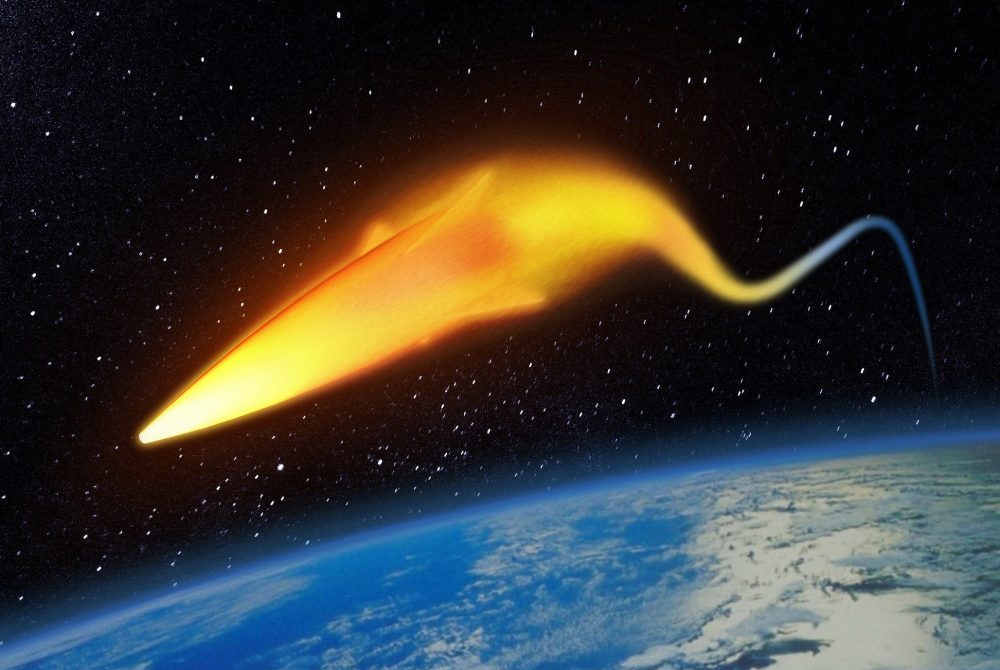
It’s always risky to proffer an opinion on the probable impact of a new technology, especially if you aren’t entirely convinced that a much-touted ‘game-changer’ is quite as significant as its proponents would have you think. For example, there were plenty of distinguished scientists and engineers last century who badly misread the future possibilities for aircraft or nuclear energy, two developments that changed the nature of warfare and military strategy. There’s even a hall of infamy for erroneous predictions about technology—into which I would prefer not to be inducted. Nonetheless, I’ve had a go at assessing the significance of hypersonic technologies in a new ASPI paper released today.
Hypersonics is both literally and figuratively a fast-moving field. I’ve had to revise my paper several times in the past few weeks to include new publicly available information—which is an indication of the current high level of activity, as several nations push ahead with the rapid development of new hypersonic weapons. (There is no precise definition of hypersonic, but roughly speaking it includes anything travelling faster than Mach 5, or five times the speed of sound.)
Australia is a player in the field as well. We have been involved in joint experimental activities with the US for over 20 years and have a cadre of world-class researchers. The government has included hypersonic weapons in its defence acquisition plans—though, typically, details of funding and timelines are scant.
As I explain in the paper, hypersonic systems are not new to the world’s military arsenals. The first intercontinental ballistic missiles (ICBMs) appeared in the 1950s. Their development required engineering solutions to deal with the heat generated by very high-speed flight through the atmosphere, but that problem was solved theoretically in the mid-1950s and practically in the years that followed. Re-entering the earth’s atmosphere at speeds in excess of Mach 20, ICBMs were essentially immune to any sort of defensive action, leading to the Cold War standoff of mutually assured destruction.
Even today, defence against anything other than a small number of unsophisticated ICBMs remains highly problematic. And the emerging generation of hypersonic weapons is likely to render defensive efforts even less effective. At the strategic level, there are hypersonic ‘prompt global strike’ systems, in the form of glide weapons that skip off the upper layers of the atmosphere one or more times before re-entering at hypersonic speed. By travelling at a lower altitude than the lofted trajectories of ICBMs, they provide reduced warning times to ground-based radar. And, because they can manoeuvre—in contrast to the predictable trajectories of ICBMs—they can approach the intended target from almost any direction.
At the tactical level, air-breathing hypersonic strike weapons will enable attackers to stand off at long range, but still engage the target in short times. A Mach 8 weapon travels 100 kilometres in a little over half a minute. Heating caused by motion through the atmosphere means that hypersonic speed isn’t practically achievable near sea level, so the flight will take place at high altitude before dropping down to a supersonic terminal phase. Because high speed precludes high manoeuvrability, such weapons won’t be suitable against fast-moving targets but could be very effective against fixed targets or slow-moving targets such as ships. In 30 seconds, a 20-knot surface vessel will have travelled around 400 metres. Provided that the initial position data programmed into the missile at launch was accurate, only small course corrections would be needed.
Australia is investing many billions of dollars in advanced sensors and combat systems to defend its surface vessels against subsonic and supersonic weapons. In the paper, I hedge about the possible consequences of hypersonic strike weapons for the effectiveness of our current and future ship-based missile defence systems. I think that’s analytically correct, as there might be clever ways of using the systems we’re buying to work against faster and less predictable incoming weapons. But my gut says otherwise. The fundamental problem of defending ships is that they are large, slow and confined to a two-dimensional surface. And if they have to rely on large, multimillion-dollar missiles that can’t be reloaded once fired, any performance increase to the incoming weapon that reduces the effectiveness of the defensive missile makes life much harder.
In between strategic and tactical systems, intermediate range (500- to 5,000-kilometre) hypersonic weapons raise some serious arms control and stability issues. Intermediate range ballistic weapons were banned by treaty towards the end of the Cold War because the reduced warning times increased the risk of uncontrolled escalation. (That was at the heart of the Cuban missile crisis.) So hypersonic weapons don’t create a new problem, but they exacerbate the old one by providing even shorter warning times.
My paper contains a survey of current hypersonic developments. Many Russian and Chinese systems are being developed with the capability to field either conventional or nuclear warheads. That presents an obvious escalation concern—the detection of an incoming weapon that could be carrying a nuclear weapon presents a decision-maker with a difficult choice. Again, that’s not a new problem, as Chinese anti-ship ballistic missiles already raise that spectre, but hypersonic delivery further increases the chance of miscalculation.
Collectively, the issues raised by the likely deployment of hypersonic weapons during the course of this decade have prompted the US Congressional Research Service to wonder whether there’s ‘a need for risk-mitigation measures, such as expanding New START [the new strategic arms reduction treaty], negotiating new multilateral arms control agreements, or undertaking transparency and confidence-building activities’. With new announcements and reports of hypersonic developments coming along every few weeks, it seems like a good time to move discussions of their implications along at a faster speed as well.

